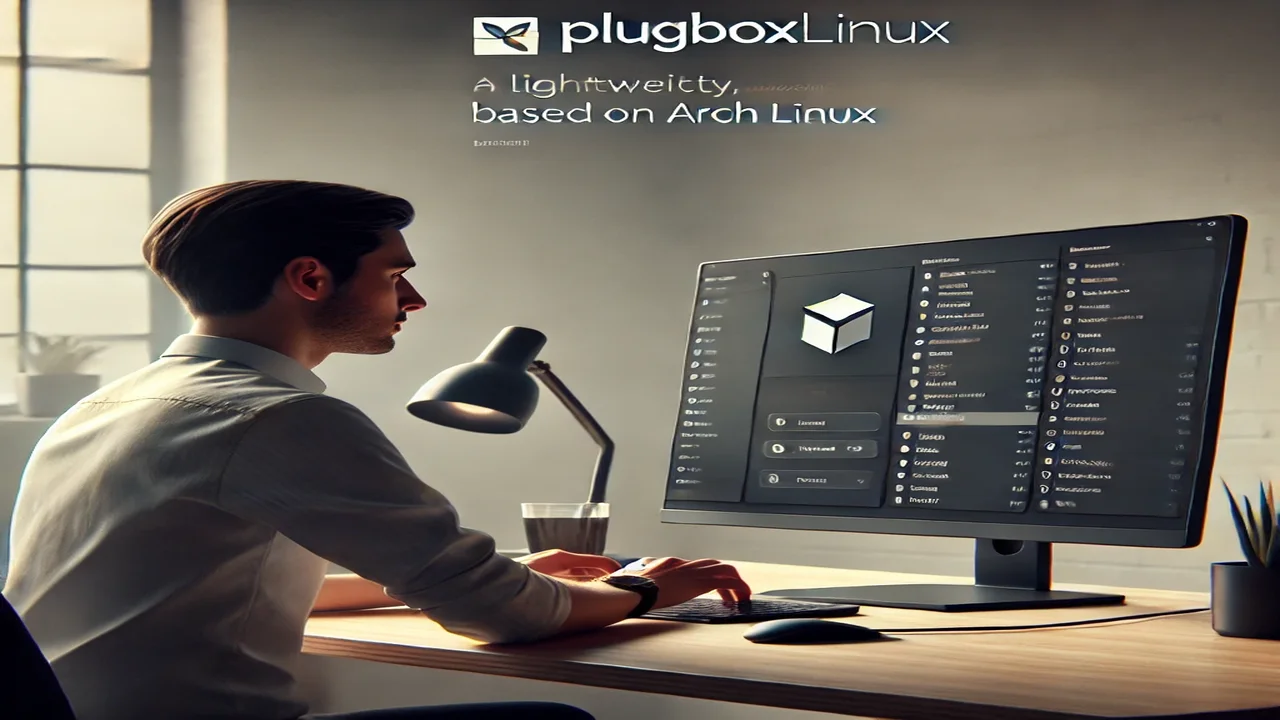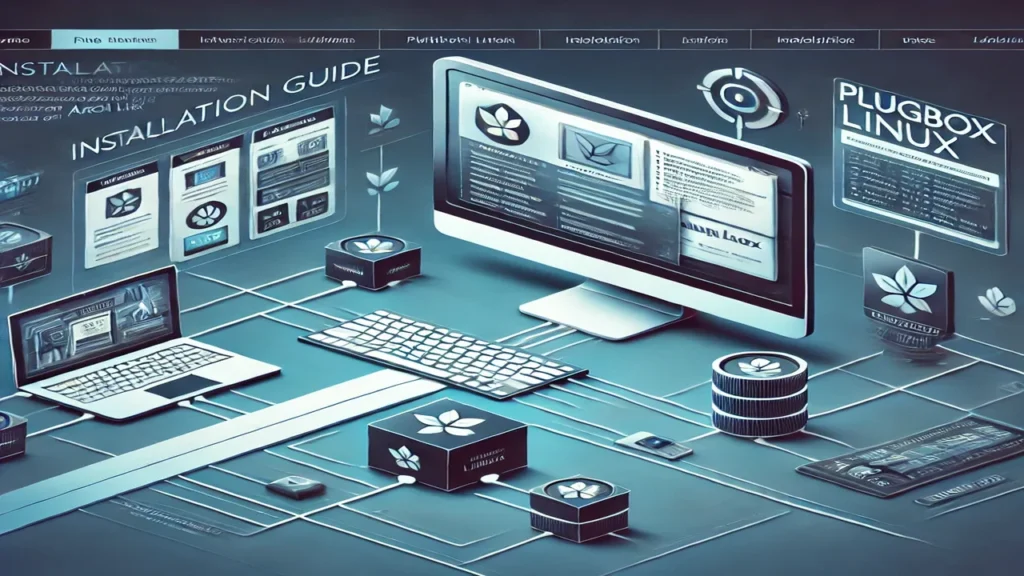PlugboxLinux: A Versatile Linux Distribution for Power Users

Introduction
With its unique features, PlugboxLinux stands out among the many Linux distributions available. Linux enthusiasts, developers, and power users will find what they’re looking for in this basic yet powerful distribution based on Arch. Unlike other Linux distributions, PlugboxLinux is an ecosystem that puts an emphasis on control, customization, and speed. For users who would rather keep their hands on the wheel, PlugboxLinux provides an unmatched degree of efficiency and versatility.
What is PlugboxLinux?
One lightweight Linux distribution that is known for its simplicity, efficiency, and customizability is PlugboxLinux. It is based on Arch Linux. Developers and power users looking for a stripped-down system that can be set up from scratch will find it to their liking. With PlugboxLinux, users may install only the apps and services they actually need, unlike with mainstream distributions that typically come laden with a plethora of unnecessary software.
Servers, embedded systems, and low-resource devices are among of the best examples of contexts that this distribution excels in providing both stability and performance. Pacman, the robust package manager of Arch Linux, is utilized by PlugboxLinux. This allows PlugboxLinux access to a large repository of programs and the most recent software updates. In spite of its spare design, PlugboxLinux is completely compatible with Arch Linux’s large user base and documentation, giving users access to a wealth of resources and assistance.
Why Choose PlugboxLinux?
1. Lightweight and Efficient Design
The small footprint and high efficiency of PlugboxLinux are two of its strongest selling points. The distribution is purposefully minimal so that users can assemble their own systems by picking and choosing which components they require. For older hardware or environments with limited resources, PlugboxLinux is a great solution due to its minimalistic approach, which lowers system clutter and boosts speed.
2. Highly Customizable Environment
When it comes to personalization, PlugboxLinux really stands out. Every part of a user’s system, from the kernel to the desktop, is customizable. Since most distributions ship with default settings that might not work for some users, this degree of customization is unusual. With PlugboxLinux, the system may be customized to suit individual needs like a blank canvas.
3. Powerful Package Management with Pacman
The efficiency of PlugboxLinux is built around Pacman, the package manager of Arch Linux. Fast, dependable, and adaptable, Pacman gives users unfettered access to a treasure trove of apps and the most recent software updates. Pacman guarantees a simple and painless experience whether you install new applications, manage dependencies, or update your system.
4. Ideal for Advanced Users and Developers
Nobody should try to use PlugboxLinux if they aren’t brave. The intended audience consists of those with extensive knowledge of Linux and experience dealing with command lines. The distribution offers developers a rock-solid base to build and experiment with. You can build, test, and deploy on top of it with ease thanks to its powerful tools and minimalist design.
5. Excellent for Server and Embedded Systems
Servers and embedded systems are ideal environments for deploying PlugboxLinux because to its small footprint. System efficiency, stability, and security—without the need for further software—are often necessities in these settings. To satisfy these objectives, PlugboxLinux provides a strong and streamlined framework that can be tailored to match the unique requirements of various applications.
Installation Guide

Downloading PlugboxLinux
Obtaining the most recent version of PlugboxLinux from its official website is the initial stage in the installation process. Pick an ISO image that’s compatible with your computer’s architecture (32-bit or 64-bit). To install PlugboxLinux on any computer, once the download is finished, you can use Rufus or Etcher to make a bootable USB drive.
Installing PlugboxLinux on Your System
Although experience with the command line is necessary for the installation process of PlugboxLinux, it is otherwise uncomplicated. A command prompt will be displayed after the computer boots from the USB disk. The next steps are to format the hard drive partitions, mount them to the correct directories, and partition the hard disk. Then, using the Pacstrap command, you can install the base system.
Configuring the System
Configuration follows installation of the basic system. In order to accomplish this, you must install the required bootloader, generate the fstab file, and configure the system clock. Making an account and choosing a password are also required. Not only that, but you may install whatever extra software you need and adjust your network settings.
Customizing Your PlugboxLinux Installation
Its adaptability is one of PlugboxLinux’s strongest points. Once the installation is finished, you may start tailoring your system to meet your specific requirements. Desktop environments, the display manager, and application configurations might all be part of this process. Because it is built on Arch Linux, PlugboxLinux gives you access to the Arch User Repository (AUR), where you can find many packages that users have donated.
Post-Installation Tips and Best Practices
Maintaining an up-to-date system is crucial after installing and customizing PlugboxLinux. Maintain a secure system by setting up a firewall and other security measures, and use Pacman to check for updates on a regular basis. Further optimization of system performance can be achieved by adjusting various settings and uninstalling unused software.
PlugboxLinux vs. Arch Linux: A Comparative Analysis
Key Differences and Similarities
While both PlugboxLinux and Arch Linux are based on Linux, their designs aim at distinct things. In contrast to Arch Linux, which is more of a general-purpose distribution with a minimalistic and adaptable approach, PlugboxLinux is designed with sophisticated users in mind and prioritizes efficiency and simplicity. Although both versions are compatible with the same software repositories and use Pacman as their package manager, PlugboxLinux is frequently chosen for server deployments and embedded systems because of its smaller footprint.
Performance Comparison
In low-resource settings, PlugboxLinux typically performs better than Arch Linux. Faster startup speeds and more responsive apps are possible outcomes of PlugboxLinux’s lean architecture, which implies it utilizes fewer system resources. Users who require a powerful machine free of unnecessary applications will find it to be an ideal option.
Customizability and Flexibility
While both PlugboxLinux and Arch Linux provide extensive customization options, those looking to construct their own system will find that PlugboxLinux is easier to utilize. As an alternative to Arch Linux, which comes with more pre-installed packages and customization options, PlugboxLinux offers a stripped-down base system that users can modify to meet their own requirements.
Community and Support
The Arch Linux community is big and active, and there’s a lot of documentation online. Because of its compatibility with Arch’s resources, PlugboxLinux also benefits from this. But PlugboxLinux also has its own community of users that are always willing to help out with questions or issues. To get answers to your questions and discuss what you’ve learned with other PlugboxLinux users, check out the community channels and forums.
Use Cases: When to Choose PlugboxLinux Over Arch Linux
Users in need of a lightweight, adaptable, and efficient system will find PlugboxLinux to be the perfect fit. Server installations, embedded systems, and low-resource settings that prioritize stability and performance are ideal for it. As an alternative to Arch Linux, PlugboxLinux is great if you’re an advanced user who wants complete control over your system settings or if you require a distribution that can be customized for specific uses.
Customizing PlugboxLinux for Developers

Setting Up a Development Environment
Installing PlugboxLinux gives developers the freedom to create a development environment that works for them because to its customizable settings. For example, you may need to configure the system to operate with a certain development framework, or install a specific collection of libraries, tools, and programming languages. You can locate and install the software packages you need with the help of the Arch User Repository (AUR).
Optimizing Performance for Development Tasks
Developers rely on their systems to perform intensive processes like code compilation and virtual machine operations, therefore optimizing performance is crucial for them. Plugbox is aIn addition to Linux’s minimalist architecture, developers can further reduce system resource overhead by configuring the kernel for low-latency operation, fine-tuning CPU and memory allocation, and other system settings.
Utilizing PlugboxLinux’s Package Management
An crucial tool for programmers is Pacman, which PlugboxLinux uses as its package manager. It manages dependencies automatically and makes it easy to install, upgrade, and remove software applications. To further facilitate software distribution inside development teams or across various systems, Pacman also allows developers to build and maintain their own package repositories.
Embedded System Development
Because of its small footprint, PlugboxLinux is well-suited for use in creating embedded system software. If you’re developing for an embedded device, such as Raspberry Pi, BeagleBone, or another, PlugboxLinux will provide you a stable and efficient environment. All the necessary tools and libraries for embedded development are available to developers thanks to the distribution’s compatibility with Arch Linux.
Collaborating with the PlugboxLinux Community
Being involved in a community can offer developers a lot of benefits. Developers can ask questions, exchange experiences, and work together on projects in the vibrant PlugboxLinux community’s many online forums and mailing groups. Developers can improve the distribution over time, learn from one other’s experiences, and solve common issues by being active in the community.
Must Visit: FintechZoom.com: A Comprehensive Guide
FAQs
How to install PlugboxLinux on a server?
Installing PlugboxLinux on a server involves downloading the ISO image, creating a bootable USB drive, and following the installation process. The steps include partitioning the hard drive, installing the base system, and configuring the necessary services. The process requires familiarity with the command line and Linux system administration.
Is PlugboxLinux better than Arch Linux?
The choice between PlugboxLinux and Arch Linux depends on your specific needs. PlugboxLinux is a lightweight, streamlined version of Arch Linux, designed for users who require a minimalistic system. It is better suited for environments where performance and stability are critical, such as servers and embedded systems.
What are the benefits of using PlugboxLinux?
The benefits of using PlugboxLinux include its lightweight design, high customizability, and efficient performance. It is ideal for advanced users and developers who want full control over their system. PlugboxLinux is also an excellent choice for deploying on servers and embedded systems.
How to customize PlugboxLinux for developers?
Customizing PlugboxLinux for developers involves setting up a tailored development environment, optimizing performance for specific tasks, and utilizing Pacman for package management. Developers can also configure the system for embedded development and collaborate with the PlugboxLinux community for support and collaboration.
How to configure Pacman on PlugboxLinux?
Configuring Pacman on PlugboxLinux involves editing the Pacman configuration file to enable or disable repositories, set mirrors, and configure package options. Users can also create custom repositories and use Pacman’s advanced features to manage software packages efficiently.
Conclusion
For sophisticated users and developers that prioritize control, personalization, and speed, PlugboxLinux is an excellent and flexible Linux distribution. Its adaptability and small footprint make Pacman a great pick for embedded devices and server deployments, among other uses. You can find everything you need with PlugboxLinux, whether you’re a developer aiming to create a bespoke development environment or a power user demanding an efficient and optimized system.

Nancy Albret is a dynamic blogger for Magzinely.com, exploring a variety of subjects from technological innovations to cultural perspectives. Her writing sheds light on how modern living intertwines with enduring traditions and the newest developments in technology for efficiency and sustainability.






